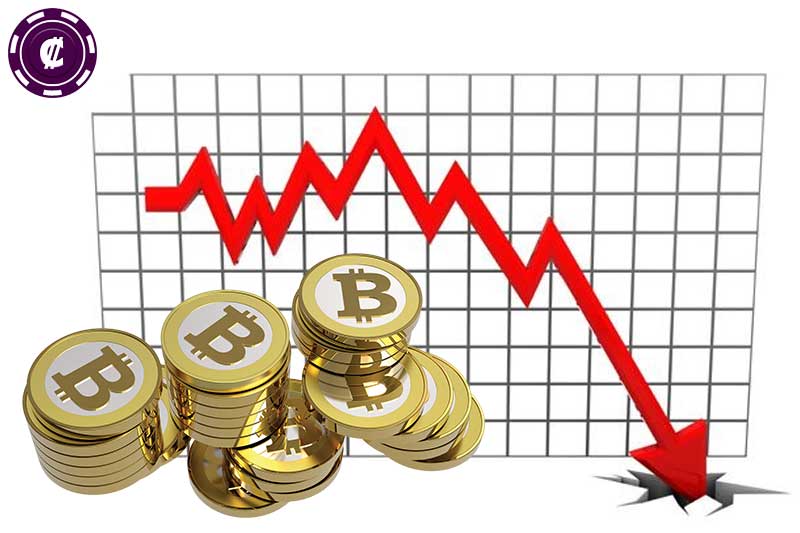6 Possible Explanations Why Bitcoin And Cryptocurrency Prices Dropped So Low 22nd December
Bitcoin’s rapid descent gathered pace on Friday as the cryptocurrency crashed below $11,000. Bitcoin’s price has fallen more than 40 per cent from its record high of nearly $20,000 (£14,950) set at the start of the week.
The price of the digital currency fell as low as $10,891 on Friday afternoon, according to CoinDesk’s Bitcoin Price Index.
It has been a volatile month for the cryptocurrency which has surged in value from under $1,000 at the start of the year.
“Be fearful when others are greedy and be greedy when others are fearful.” —Warren Buffett
Bitcoin hit a record high of $19,666 on Sunday in the lead up to exchange giant CME Group’s launch of its bitcoin futures. It has since lost about a third of its value.
It was not immediately clear what caused the sudden fall in price.
The success of bitcoin has led to a rise in in rival cryptocurrencies and competition in the market is heating up.
Until Dec. 22, the world of cryptocurrency felt positively ‘to the moon.’ It seemed like everywhere you looked, your favorite cryptocurrency was hitting new all-time highs with ease, breaking any barrier set before it.
In fact, according to data from OnChainFX (reported by Coindesk): in the past four days, all of the top-20 cryptocurrencies have hit all-time highs.
But yesterday, a steep drop-off in Bitcoin—falling as low as $12.5K—precipitated a drop off among essentially all other major cryptocurrencies. Testament to the power of Bitcoin, this amounted to more than a 20 percent decrease in the entire global cryptocurrency market cap (currently operating at $478B, down from $611B).
Through the night we’ve seen signs of a possible upswing—but many are left wondering what could have caused such a massive drop. Only time will tell, but in the meantime, here are 6 possible explanations for the day’s dip.
1. Tis The Season To Be Spending
It might seem comical when you first hear it, but with major holidays like Christmas, Hanukkah, Kwanzaa, and New Year’s planted right in the same month stretch—the end of the year is a notoriously bad time for savings accounts and investments, as many seek to withdraw yearly gains.
Setting aside speculation and the general (deserved) fervor around blockchain technology, few cryptocurrencies currently serve a purpose that benefits the average consumer more than cash does. With a few exceptions, cryptocurrencies are more difficult to use for everyday transactions, meaning many in the market are there for speculative investment. Speculative buyers do not necessarily equate to market stability—as many will seek to cash out on early gains rather than ‘hodl’ through the waves of market volatility.
The end of the year marks the time when these investors would be most likely to convert their winnings to cash, and yesterday—conveniently just a few days before Christmas—might have been the day that experienced the greatest impact of this behavior.
2. Altcoin Overload
As mentioned above, following the initial surge in Bitcoin, most of the major gains we’ve seen in cryptocurrency this month have been in altcoins like Cardano, Qtum, Ripple, TRON, and Verge.
This has undoubtedly felt amazing to the investors motivated to leave the safe haven of Coinbase for the further reaches of the other exchanges—one might even say too good to be true. In the process of diverting funds from BTC, enthusiastic crypto traders may have also temporarily destabilized the Bitcoin market. If Bitcoin were just another coin, that would be all well and good, but Bitcoin is the “gold” of the cryptocurrency world—the standard by which all other coins are measured. So whether we like it or not, every altcoin is hedged (in some way) along Bitcoin’s success—or at a minimum for the foreseeable future, its maintenance.
3. Bitcoin Cash Confusion on Coinbase
On Tuesday, Coinbase announced it would support buying, selling, and trading Bitcoin Cash (BCH) on its platform. Since the August fork, there has been major community in-fighting among the BCH and BTC camps regarding which is the “true” Bitcoin. Point being: energy is high around this discussion. Many have speculated that BCH would end up on Coinbase, but even conservative estimates in crypto circles were January 2018.
So it’s no surprise that the noticeable and seemingly out-of-the-blue gains made in BCH in the days and hours leading up to the announcement caused some on social media to cry “insider trading.” This resulted in Coinbase shutting down BCH trading within minutes to launch an internal probe into the possibility that insider trading occurred.
By the next afternoon, BCH was in full force again on Coinbase. But the impact might have been deeper felt than we initially realized. Many have at best a passing understanding of the differences between BTC and BCH, and seeing BTC prices drop so sharply when BCH jumped onto the scene—as well as BCH’s perceived volatility—might have left a larger stain in their minds on the broader concept of cryptocurrency. And even for those who didn’t pay too much attention to the hullabaloo, it might have just amounted to extra, unwanted confusion to keep them from participating further.
4. Market Manipulation
We also have to entertain the possibility that foul play is afoot. What would that look like?
A recent report in Bloomberg revealed that a group of 1000 investors own 40 percent of all Bitcoin. This means that—if even some among that number were acting in concert, they would have the potential to manipulate the market to their whim. These “whales”—investors, hedge funds, and otherwise with enough stake in the crypto market to tip the scale—could easily have engaged in “painting the tape” (creating the appearance of high transaction volume by simply selling and re-selling back-and-forth on small margins) to inflate the value of Bitcoin.
Why would they do that? So that they could sell off at the highest possible price before inducing a crash by selling off mass amounts of their Bitcoin stock. Of course, this can only work so far unless others begin to take notice and sell their own Bitcoin off; that’s where the influx of new traders comes into play. By essentially scaring fair-weather fans with FUD (“fear, uncertainty, and doubt) who started buying in on the crypto hype without much study of the market, whales stand to make off like bandits. How? By selling off at record highs, dropping the market to record lows, then buying back in.
This is made even more appealing with the launch of bitcoin futures trading on Cboe and CME, which sets these players up to short the market.
5. Hacking & Regulation
Earlier this month the SEC halted PlexCoin on charges of being an ICO scam, and this week it reportedly suspended trading in The Crypto Company over “concerns regarding the accuracy and adequacy of information” and stock manipulation. Meanwhile, Youbit, the popular South Korean exchange, announced its closure on Dec. 20 after being hacked (purportedly by North Korea), losing 17 percent of all assets.
As an added note, the ‘insane’ energy costs associated with Bitcoin mining continue to garner negative press as we move into the new year.
There is a chance that the general concern created in these developments has scared off potential investors and even caused existing participants to cut their losses.
6. The Bubble Was Real & Crypto Winter Is Coming
Of course, there could be some truth to all of the above, and together are amassing to the bubble pop that many have been warning users about for months.
The argument against this being a sign of crypto winter is that we’ve seen this degree of volatility in Bitcoin all throughout 2017 (and even prior). The difference now is that the sheer volume of players is a full exponent greater than it’s ever been—and many new participants have no experience navigating these types of markets, making them more sensitive to the down moments.
If we are entering the crypto winter, the past eight years of Bitcoin has revealed two things: 1) that Bitcoin always bounces back—and with it, a whole roster of cryptocurrencies (with inevitable casualties along the way), and 2) the demand for decentralized currency and blockchain technology is here to stay. Some might urge you to cut your losses now before the supposed winter blusters in harder. Others might say it’s just another hump in the road.
Editor’s Note & Disclosure: The author participates in cryptocurrency markets. Neither the author nor Forbes endorses participation in any token sale or cryptocurrency investment, all of which have significant inherent risk. Seek advice from a financial advisor as well as do your own due diligence before considering investment.
forbes – Jesse Damiani is Editor-at-Large of VRScout, Series Editor of Best American Experimental Writing, and CEO of Galatea, a writing and project management tool for AR and VR stories.
See other “Crypto Watch” coverage: Litecoin, Ripple, TRON, Cardano, Stellar, Bitcoin Cash, Qtum, Verge, and Reddcoin.




